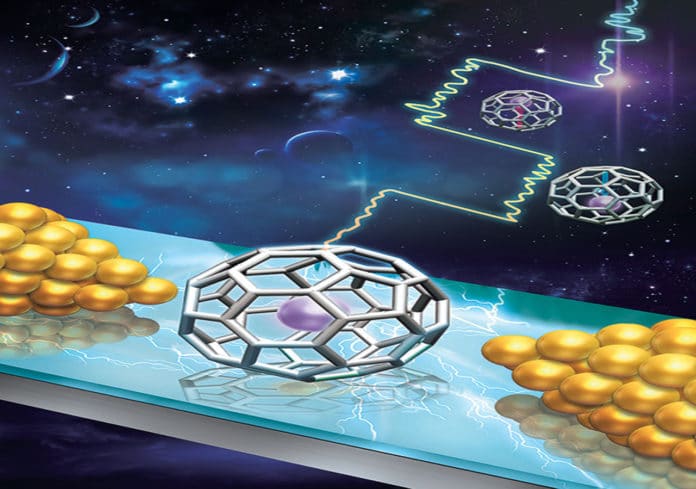Smaller electronics are vital to developing more advanced computers and different gadgets. This has prompted a push in the field toward figuring out how to replace silicon chips with molecules, an effort that incorporates creating single-molecule electret. This switching device could fill in as a platform for minuscule, non-unstable storage devices. Since it appeared to be that such a device would be so unstable nonetheless, numerous in the field contemplated whether one would exist.
Scientists from Yale University, in collaboration with scientists from Nanjing University, Renmin University, Xiamen University, and Rensselaer Polytechnic Institute, Mark Reed, the Harold Hodgkinson Professor of Electrical Engineering & Applied Physics, have demonstrated a single-molecule electret. This device could be one of the keys to molecular computers.
Usually, electrets are made of piezoelectric materials, for example, electrets that produce sound in speakers. Dipoles in electrets spontaneously line up in the same direction. Applying an electric field can reverse their trends.
It has always remained unknown how small you could make these electrets.
In their study, the team embedded an atom of Gadolinium (Gd) inside a carbon buckyball, a 32-sided molecule, otherwise called a buckminsterfullerene. When the scientists put this construct (Gd@C82) in a semiconductor-type structure, they observed single-electron transport and used this to comprehend its energy states. However, the real breakthrough was that they could utilize an electric field to switch its energy state, starting with one stable state and then onto the next.
Mark Reed, the Harold Hodgkinson Professor of Electrical Engineering & Applied Physics, said, “What’s happening is that this molecule is acting as if it has two stable polarization states. We ran various experiments, measuring the transport characteristics while applying an electric field, and switching the states back and forth. We showed that we could make a memory of it – read, write, read, write.”
“The present device structure isn’t currently practical for any application, but proves that the underlying science behind it is possible.”
“The important thing in this is that it shows you can create in a molecule two states that cause spontaneous polarization and two switchable states. And this can give people ideas that maybe you can shrink memory down literally to the single molecular level. Now that we understand that we can do that, we can move on to do more interesting things with it.”
Journal Reference:
- Zhang, K., Wang, C., Zhang, M. et al. A Gd@C82 single-molecule electret. Nature Nanotechnology, 2020. DOI: 10.1038/s41565-020-00778-z
